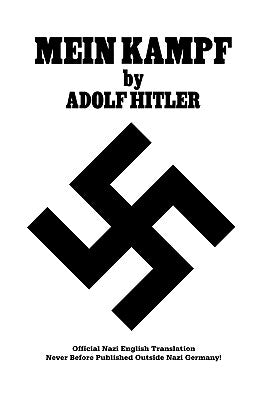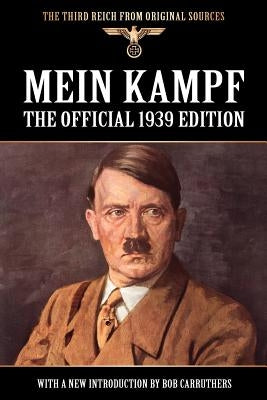Top Children’s Books for Early Learning

Early learning plays a crucial role in a child's development, setting the foundation for future success. One of the best ways to support early childhood education is through engaging and educational books. The right books can stimulate imagination, improve language skills, and foster a love of reading from a young age. In this article, we will explore the top children's books for early learning, perfect for toddlers and preschoolers.
1. Goodnight Moon by Margaret Wise Brown
"Goodnight Moon," written by Margaret Wise Brown and illustrated by Clement Hurd, is a beloved children's book first published in 1947. The story features a gentle, rhythmic text that bids goodnight to various objects in a cozy, dimly lit room, creating a calming bedtime ritual for young readers. Its simple yet poetic narrative is paired with vibrant, alternating color and black-and-white illustrations, which engage children and foster a sense of security and peace. The book's repetitive structure and soothing tone help to establish a comforting bedtime routine, making it a timeless classic. Brown's evocative writing, combined with Hurd's iconic illustrations, captures the quiet magic of bedtime, providing a sense of closure to the day. "Goodnight Moon" remains a staple in children's literature, cherished by generations for its warm and reassuring depiction of the familiar process of saying goodnight.
2.The Very Hungry Caterpillar by Eric Carle
"The Very Hungry Caterpillar," written and illustrated by Eric Carle, is a celebrated children's book first published in 1969. The story follows the journey of a small caterpillar as it eats its way through a variety of foods before transforming into a beautiful butterfly. Carle's distinctive collage art, characterized by vibrant colors and textured illustrations, brings the caterpillar's adventure to life. The book's innovative design, with pages of varying sizes representing the caterpillar's progressive eating spree, adds a tactile and interactive element that engages young readers.
3.Brown Bear, Brown Bear, What Do You See? by Bill Martin Jr. and Eric Carle

"Brown Bear, Brown Bear, What Do You See?" is a beloved children's book written by Bill Martin Jr. and illustrated by Eric Carle, first published in 1967. This classic picture book uses rhythmic and repetitive text, which captivates young readers and helps with early literacy skills. The story follows a sequence of animals, each describing what they see, creating a predictable and engaging pattern that encourages participation and memorization. Eric Carle's distinctive collage illustrations, with their bold and vibrant colors, enhance the appeal of the book, making each animal distinct and easily recognizable. The combination of rhythmic text and striking visuals makes the book an excellent tool for teaching colors and animal recognition to preschoolers.
4. Chicka Chicka Boom Boom by Bill Martin Jr. and John Archambault
"Chicka Chicka Boom Boom," written by Bill Martin Jr. and John Archambault, and illustrated by Lois Ehlert, is a vibrant and rhythmic children's book first published in 1989. The story unfolds with the letters of the alphabet daringly climbing a coconut tree, creating a playful and educational narrative. As the letters ascend, the rhythmic chant of "Chicka Chicka Boom Boom, will there be enough room?" builds anticipation until the inevitable tumble, teaching both the alphabet and the concept of sequencing.
5. Where the Wild Things Are by Maurice Sendak
"Where the Wild Things Are" by Maurice Sendak is a beloved children's picture book published in 1963. It tells the story of Max, a young boy who, after being sent to his room for misbehaving, imagines traveling to a fantastical world inhabited by wild creatures. Max becomes the king of these "wild things" and engages in wild rumpus with them. However, he soon feels lonely and longs to return home, where he finds his supper waiting for him, still warm. The book explores themes of imagination, emotions, and the complexities of childhood, capturing the wild, uninhibited spirit of a child's inner world. Sendak's illustrations are iconic, bringing to life the whimsical and sometimes dark nature of Max's adventure. "Where the Wild Things Are" remains a timeless classic, cherished for its emotional depth and enchanting narrative.
6.Dr. Seuss's ABC: An Amazing Alphabet Book! by Dr. Seuss
"Dr. Seuss's ABC: An Amazing Alphabet Book!" is a vibrant and engaging children's book that introduces young readers to the alphabet through Dr. Seuss's trademark whimsical style. Published in 1963, this book features playful rhymes and imaginative illustrations that make learning the ABCs fun and memorable. Each letter is presented with a unique and often silly character or object, such as the "Aunt Annie’s alligator" for A and the "Zizzer-Zazzer-Zuzz" for Z. The rhythmic text and repetitive patterns help children recognize and remember the letters and their sounds, fostering early literacy skills. Dr. Seuss's creativity shines throughout, transforming the simple task of alphabet learning into an exciting adventure. "Dr. Seuss's ABC" is not only an educational tool but also a delightful reading experience that captures the curiosity and enthusiasm of young minds, ensuring its place as a beloved classic in early childhood education.
7.Guess How Much I Love You by Sam McBratney
8. Pete the Cat: I Love My White Shoes by Eric Litwin and James Dean
"Pete the Cat: I Love My White Shoes" by Eric Litwin and illustrated by James Dean is a cheerful and catchy picture book that follows the adventures of Pete the Cat as he strolls along in his brand new white shoes. Published in 2010, the story takes a simple premise—Pete stepping into various messes that turn his shoes different colors—and turns it into a lively, repetitive narrative that engages young readers. Despite the mishaps, Pete maintains his cool attitude and sings his signature song: "I love my white shoes!" This upbeat refrain encourages children to embrace positivity and adaptability in the face of unexpected changes. James Dean's colorful illustrations capture Pete's expressions and the vibrant transformations of his shoes, making the story visually appealing and easy to follow. "Pete the Cat: I Love My White Shoes" is a joyful celebration of resilience and optimism, perfect for preschoolers and early readers alike.
9.We're Going on a Bear Hunt by Michael Rosen and Helen Oxenbury
"We're Going on a Bear Hunt" by Michael Rosen and illustrated by Helen Oxenbury is a classic children's book first published in 1989. It tells the adventurous tale of a family setting out on a bear hunt, encountering various obstacles along the way. The repetitive and rhythmic text, coupled with Oxenbury's evocative illustrations, creates a sense of anticipation and excitement as the family wades through grass, splashes through rivers, and squelches through mud in search of the bear. Each landscape is vividly depicted, drawing readers into the journey with the family. The refrain "We're not scared!" reinforces courage and determination, even in the face of uncertainty. The story takes an unexpected turn when the family finally meets the bear, leading to a hasty retreat back home. "We're Going on a Bear Hunt" is a captivating blend of adventure, suspense, and family bonding that continues to captivate young readers worldwide.
10. The Snowy Day by Ezra Jack Keats
"The Snowy Day" by Ezra Jack Keats, published in 1962, is a groundbreaking children's book that celebrates the wonder and joy of a snowy day through the eyes of a young African American boy named Peter. The story follows Peter as he explores his neighborhood covered in snow, leaving footprints, making snow angels, and even trying to save a snowball for later. Keats's illustrations, which combine collage and watercolor techniques, beautifully capture the quiet magic of a snowy urban landscape and the innocence of childhood exploration. Peter's adventures in the snow are simple yet profound, depicting universal experiences of discovery and play. Through its portrayal of Peter's ordinary yet extraordinary day, "The Snowy Day" became one of the first mainstream picture books to feature an African American child as the protagonist, making it a pivotal work in children's literature that continues to resonate with readers of all ages.
Tips for Choosing the Best Books for Early Learning

When selecting books for early learning, consider the following tips to ensure you choose the most beneficial and engaging options for your child:
i. Age Appropriateness: Choose books that are suitable for your child's age and developmental stage. Board books with simple text and sturdy pages are great for toddlers, while picture books with more complex stories are better for preschoolers.
ii. Interactive Elements: Look for books with interactive elements such as lift-the-flap, touch-and-feel, or pop-up features. These can make reading more engaging and help develop fine motor skills.
iii. Repetitive and Predictable Text: Books with repetitive and predictable text help children anticipate what comes next, promoting language development and phonemic awareness.
iv. Colorful and Engaging Illustrations: Bright, colorful illustrations capture children's attention and help them connect words with images, aiding in vocabulary development.
v. Themes and Values: Choose books that teach valuable lessons, such as friendship, empathy, perseverance, and problem-solving. These themes help children understand and navigate the world around them.
vi. Encourage Participation: Books that encourage children to participate, either through repeating phrases, making animal sounds, or answering questions, make reading an interactive and enjoyable experience.
The Importance of Reading Aloud

Reading aloud to children is one of the most important activities for their early learning and development. Here are some key benefits:
i. Language Development: Reading aloud exposes children to new vocabulary and sentence structures, enhancing their language skills.
ii. Listening Skills: Children develop better listening skills as they focus on the story being read to them.
iii. Imagination and Creativity: Listening to stories stimulates children's imagination and encourages creative thinking.
iv. Emotional Bonding: Reading together creates a special bonding time, fostering a sense of security and love.
v. Cognitive Skills: Engaging with stories helps develop cognitive skills such as memory, attention, and critical thinking.
Conclusion
Investing time in reading to your children and providing them with a variety of high-quality, engaging books is invaluable for their early learning and development. The top children’s books for early learning listed in this article offer a great starting point for building a diverse and educational library for your little ones. Remember, the goal is to make reading a fun and interactive experience that instills a lifelong love of books and learning. Happy reading!
Explore your favourite book at your own online bookstore
Happy Reading!

















